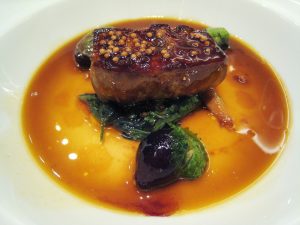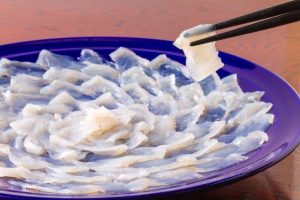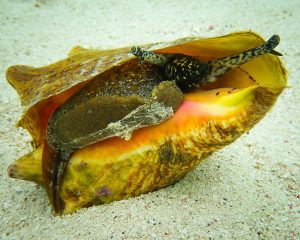We all have to eat. But when it comes to what we eat, sometimes national regulators say, “hey you can't eat that.” To which we say, “fine I'll just go to some other country and eat it there.” This is sorta like how you weren't allowed to watch rated R movies at your house, but Tommy's mom didn't care, so you spent the night over there and watched Alien and now you can’t sleep at night without waking up screaming.
Out of respect for all the people who won’t get a chance to eat some of these contraband foods, let’s take a moment to check out the foods that are either banned, illegal, or just plain hard to find.
19. Mangosteen
The mangosteen is a Southeast Asian treat said to taste like a cross between a peach, pineapple, and a lychee. It’s so tasty, that some go as far as to call it the tastiest tropical fruit in the world. And get this; these fruits are so legendary that Queen Victoria reportedly offered a knighthood to anyone who could deliver one to her. But here’s the bad news...it was banned from the United States in 2007 over concerns that it harbored disease-carrying insects.
There is good news too, though. The import ban has been lifted! If you’re lucky enough to come across one expect to pay roughly $5 each to try this wonderful fruit. It may sound steep, but it’s worth it. Trust the hype.
18. Haggis
Scotland's most famous meal, haggis, is banned in the United States thanks to the USDA’s stance against food containing lungs. Yes, you read that right, lungs. Like what you use to breathe. You see, haggis is a dish made with minced sheep's heart, liver, lungs, and vegetables which are simmered in the sheep's stomach. If you ever needed more evidence that the Scottish were as brave as William Wallace, remember this is their national dish. They love haggis.
17. Kinder Surprise
Thanks to a federal ban on non-edible items being placed inside food products, the Kinder Surprise egg is banned in the United States of America. And it’s a fact the rest of the world finds quite hilarious. It’s pretty sad really... American children eat their candy so fast they don't notice a giant plastic toy in the middle of their chocolate egg and end up choking on it.That's something that actually happened. I wish I was joking.
16. Casu Marzu
I’m going to be honest, you're not missing much with this one. Casu Marzu is literally larvae infested sheep’s milk cheese. But if for some reason you're still interested, just know the fly larvae is left to hatch inside the cheese for two to three months. And the live maggots must be thoroughly chewed before you swallow or they’ll eat their way through your intestines. So, maybe the government is actually doing us a solid by banning this one. But if you are curious, it tastes like Gorgonzola apparently. If you really want to try it for yourself (but let’s be honest, you don’t) you could always go to Sardinia.
15. Ackee Fruit
The ackee fruit is native to West Africa, and is actually the national fruit of Jamaica. But it’s illegal to import it into the United States. Why? Because if the fruit isn’t ripened properly, its toxins release a surplus of glucose and dangerously drop the blood sugar level of anyone who eats them. This, of course, could be fatal. That being said, it's large, shiny black seeds have a buttery texture and it tastes like heart of palm. And boiled ackee with salted cod is a Jamaican delicacy. Just make sure to try it while you're IN Jamaica otherwise you might find yourself in jail.
14. Unpasteurized Milk
Unpasteurized (raw) milk isn’t heat treated like pasteurized milk is. This means harmful bacteria like E. coli, Salmonella, and Listeria could still be lurking in the milk. And here’s the scary part; unpasteurized milk is 150 times more likely to cause food-borne illness than pasteurized milk. Taking that into consideration, it’s no surprise that the sale of unpasteurized milk is banned in 21 states, while other states only allow small sales directly from farms.
13. Foie Gras
Foie Gras is fatty goose or duck liver that is the result of a cruel and painful process. The bird is force-fed food through tubes until its liver grows to 10 times its normal size. While this does make the liver fatty and delicious, it's also a really bad time for the bird. That’s why foie gras is banned in multiple states, and is difficult to find in the states it isn't banned in.
12. Shark Fins
Shark fin soup is a delicacy in China and other countries in the east. And despite being a pricey dish, it’s consumed in alarming quantities. Some shark species are now under threat because of the sheer numbers slaughtered for their fins. Thankfully, the possession, sale, trade, and consumption of shark fins is banned in eight US states. Additionally, the Shark Finning Prohibition Act Of 2000 and the Shark Conservation Act Of 2010 have made shark fins difficult to acquire in the rest of the country to say the least.
11. Horse Meat
It’s technically legal to eat horse meat in all 50 states in America. But since 2006, federal law has prohibited the use of tax dollars for the inspection of imported horse meat and domestic horse slaughterhouses. And because all food needs to pass a USDA inspection to be sold in the United States, horse meat has effectively been banned from appearing in restaurants or supermarkets within the country without ever being technically banned.
10. Beluga Caviar
In 2005 the United States banned imports of beluga caviar in an attempt to protect the species from overfishing. Beluga caviar is made from the eggs of the beluga sturgeon, which lives primarily in the Caspian Sea. The caviar was extremely popular, despite costing up to $200 an ounce. The fish was almost hunted to extinction due to the demand and is now on the endangered species list.
9. Pig’s Blood Cake
Pig’s blood cake is a popular snack in Taiwan. The ‘cake’ is a mixture of pig's blood and rice on a popsicle stick… yum?. Well, pig’s blood cake is banned in the United States. Why? Because the USDA has deemed the preparation method unsanitary. Not because it's literally just blood and rice on a stick, but because it's preparation is unsanitary. Good job, USDA.
8. Sassafras Oil
Sassafras oil was used in root beer once upon a time. But the FDA banned it in 1960 over concerns one of the main ingredients, safrole, may have carcinogenic properties. Oh, did I mention safrole can be used to make ecstasy too? That pretty much immediately puts it on the no list when it comes to the United States. Got to win that War on Drugs somehow, right?
7. Absinthe
Until 2007 absinthe was banned entirely in the United States. The ban still stands to this day, but there are a few loopholes... Absinthe can now be imported to the United States, but it can’t contain the hallucinogenic chemical thujone, a.k.a “the only reason you want to drink absinthe.” If you want the real thing a surefire bet would be flying to Amsterdam.
6. Mirabelle Plums
These small sweet yellow plums are banned in the United States for some reason. No one is really sure why. They're perfectly safe to eat, they don't have any hallucinogenic effects, and they’re not endangered or at risk of extinction. As far as we can tell, they're banned because they're only grown in Lorraine, France, and import laws make them hard to import. Good old import laws.
5. Redfish
In 1980, New Orleans Chef Paul Prudhomme released a recipe for blackened redfish that was so popular the redfish was almost fished to extinction. Today the redfish is on the endangered species list and there are virtually no redfish fisheries in the United States outside of Mississippi. In fact, it’s illegal to sell redfish in every state except for Mississippi.
4. Lazy Cakes
Lazy cakes are brownies that contain the sleep-inducing hormone melatonin. Now, melatonin is a natural hormone produced by your body. So what’s the fuss? Well, lazy cakes contain contains 8 milligrams of melatonin.... That’s 25x the amount prescribed to an adult struggling to sleep! And the biggest concern is for children. Some have already been hospitalized after eating lazy cakes. The FDA is currently investigating the manufacturer, so expect a potential country-wide ban any day now.
3. Fugu
Fugu, also known as the puffer fish, is the world's most toxic species of fish. The Japanese puffer fish contains a poison up to 1200x more lethal than cyanide! So it makes sense that it’s illegal to sell, harvest, or prepare puffer fish in the United States without passing a rigorous written exam. Only a handful of highly trained chefs are permitted to serve this delicacy stateside. In fact, in the United States, there are only 17 restaurants that serve Fugu. And since the pass rate for the exam is about 25%, don't expect that number to increase anytime soon.
2. Queen Conch
Queen conch is a staple of caribbean cuisine. But importing queen conch to the states is strictly banned because of severe overfishing. While conch is basically just a large sea snail, don't let that distract you from how delicious it actually is. Popular dishes include conch fritters, conch stew, conch curry, and conch salad.
1. Ortolan
If you’re caught with this rare sparrow-sized bird in the United States, you face up to three years in prison. Poaching of this tiny European bird reportedly caused a 30% dip in its population from 1997-2007. Additionally, the whole process is kinda cruel. The ortolan is captured alive, fattened on a diet of figs, and then drowned in brandy. Once it’s dead, you roast it and consume the tiny bird in a single bite. Of course, that didn't stop former French president Francois Mitterand, who famously served the bird at his “last meal” in 1996.



























